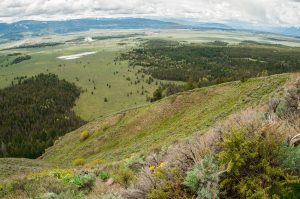The Fall semester of the Nicholas Institute for Environmental Policy Solutions and University Program in Environmental Policy Seminar Series kicked off last Friday with Dr. Paul Armsworth speaking about “The Ecological Benefit and Economic Costs of Protected Areas.” An associate professor in the Department of Ecology and Evolutionary Biology at The University of Tennessee, Knoxville, Dr. Armsworth is spending his sabbatical here at the Nicholas Institute.
The weighing of biodiversity benefits against economic costs in establishing a protected area (PA) is a fundamental issue in environmental science. In fact, it’s the point of discussion for my ENV 102 class this week.

Dr. Armsworth reminded us that 41% of biodiversity in the US is vulnerable (NatureServe), largely due to habitat loss, emphasizing the need for protected areas. However, most PAs are established in areas with poor soil conditions and on high slopes, i.e. land that is not agriculturally valuable, thus is cheaper to acquire.
With the challenge of designing a PA to maximise ecological protection limited by the amount of money available, Dr. Armsworth suggested looking at this quandary through the lens of return on investment (ROI).
A cost-only analysis would reflect economies of scale where land will cost less per hectare as total area bought increases, leaving out the ecological benefits. By evaluating the ratio of benefit gained per each increase of cost, he showed that ROI analysis improved agreement between various ecological priorities such as protecting endangered species, maximising species richness, minimising fragmentation, etc.
Dr. Armsworth used the acquisition of central and southern Appalachians by The Nature Conservancy as a case study. Centered mainly around Tennessee, he collected the potential ecological benefits through a variety of methods including field surveys, GIS, and remote sensing. The worth of nearby agricultural lands was used as a proxy for the economic cost of acquisition.
All together, ROI pointed to where and which parcels of land should be favoured for protection. The trait of an ideal PA is one where ecological benefit accrues faster than acquisition cost as land size increases, resulting in higher returns.

However, he was ready to acknowledge that a multiplicity of conservation goals may require the protection of a multiplicity of land sizes, another argument environmentalists are more than familiar with. Additionally, other regional factors may influence the where and which, such as the variety in donations and interest in conservation among different states.
The flurry of hands raised in the air after his talk gives an indication on the importance of such research. The audience proposed further areas of interests, and defended opposing views, each bringing their own areas of research and perspective into the discussion. As the only undergrad in the room, it was eye-opening to see the diversity of views represented in the Nicholas Institute, and for them to be deliberated so casually, but also knowing that it would be put into real-life test cases.
